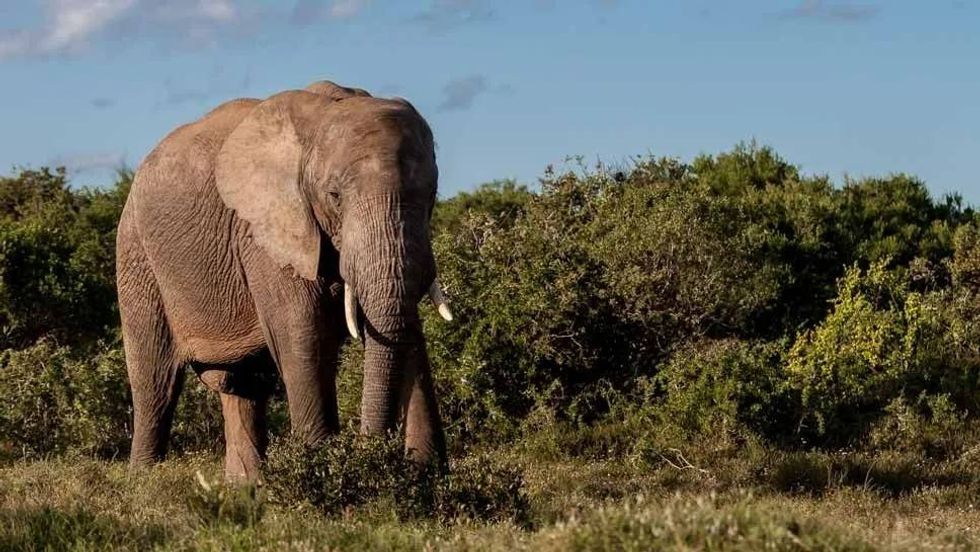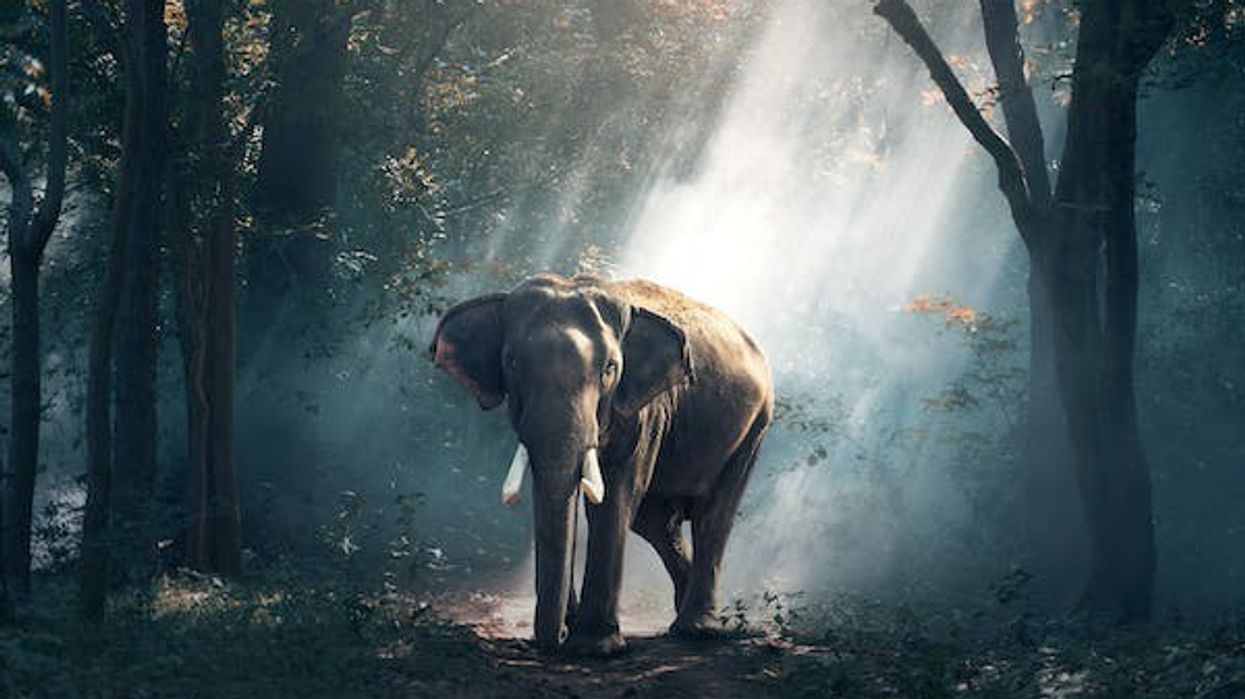We all are familiar with the elephant species in the animal kingdom. The forest elephant is a large mammal with a long cylindrical trunk hanging from their face.
Their trunk is a distinct feature that makes them more fascinating and interesting. There are three different types of elephants, and African bush elephants are one of these three types.
African bush elephant, scientific name loxodonta Africana, also known as the African Savanna elephant, is the largest land mammal in the world.
This species is full of interesting facts, and this article will help you get to know all about these exciting facts related to the African bush elephant. The African bush elephant behavior is marked by extreme trust between the family groups comprising animals of different age groups.
When you compare African bush elephant vs Asian elephant, you will be able to analyze that the African counterparts are larger than their Asian cousins. Moreover, only male Asian elephants have tusks while both males and females of African elephants have tusks.
Due to poaching for their tusks and other human activities, the African bush elephant classification is now endangered, necessitating serious concerted actions for changing the African bush elephant endangered status. The African bush elephant diet is entirely herbivorous and comprises fruits, roots and grasses.
While there are no serious predators that threaten African bush elephant, but for baby African bush elephant, predators like crocodiles, lions and hyenas do pose some threat. Learn more about beautiful animals and check out Masai giraffe facts and plains zebra facts.
African Bush Elephant Interesting Facts
What type of animal is an African bush elephant?
The African bush elephant is a large animal, which is known for being one of the largest land mammals in the world and also the largest of the three elephant species.
What class of animal does an African bush elephant belong to?
An African bush elephant (Loxodonta africana) belongs to the mammal class of animals and this species of the elephant is the largest land mammal on earth. This elephant, and the African bush elephant, is an entirely herbivorous creature and prefers to live in family groups.
How many African bush elephants are there in the world?
The recent estimated African bush elephant population is around 415,000 individuals. The African bush elephant populations have faced a steep decline because of habitat loss and poaching for the ivory trade. These animals are generally found living in herds with each herd being led by a female.
Where does an African bush elephant live?
The African bush elephants can be found in a variety of habitats, from the open savannah to desert areas. These species are commonly found in most southern African countries like South Africa.
They prefer to live in herds wherein every herd comprises of males, females, and young elephants. This forest elephant can also be found in a protected national park or wildlife sanctuary in Southern Africa.
What is an African bush elephant's habitat?
African bush elephants make their habitats in the continent of Africa. The areas where these elephants make their home are the savannas, rain forests, woodlands, scrub forests, and desert.
But as African bush elephants are in a constant threat of being poached, now the protected areas like a national park or a wildlife sanctuary have become their main habitat. These sanctuaries provide them with a similar environment and resources. In these sanctuaries, the elephants make their habitat in the areas with ample water sources and vegetation.
Who do African bush elephants live with?
The African bush elephants live in groups. These groups are matriarchal, which means that a group is a female-led group. The female leader is usually the largest and the oldest. She leads a multi-generational herd that consists of other females, called cows, and their young ones.
While on the other hand, male adult elephants, known as bulls, do not live in these groups. Male African bush elephants usually roam on their own. But sometimes, this savanna elephant may form small all-male groups.
How long does an African bush elephant live?
The lifespan of an African bush elephant is pretty long. This savanna elephant species can live up to the age of 60-70 years.
How do they reproduce?
Female African bush elephants become sexually matured after the age of 10-11 years. But the elephants become most fertile between the ages of 25-45 years.
On the other hand, the male African bush elephants become sexually mature upon reaching the age of 20 years. Once both the mates are mature enough to mate, they start the African bush elephant reproduction process through copulation.
After the copulation, the gestation period of an African bush elephant is two years long. The female is capable of giving birth to a single calf only.
In some rare cases, the calves may be twins, but this situation is extremely rare. The African bush elephant calf is taken care of for two years.
Some sort of guidance and supervision is still provided by the adults. Usually, after six years, they become mature enough to take care of themselves, and from this point onwards, the tusks of the African bush elephant calf start to grow.
What is their conservation status?
The African bush elephant comes under the endangered category. African bush elephant populations have faced a heavy decline because of habitat loss and poaching for the trade of their tusks. They are sometimes also victim of confrontation with local people of Africa.
African Bush Elephant Fun Facts
What do African bush elephants look like?
African elephants are said to be the largest terrestrial animal wherein both males and females have large tusks. Some of the major distinguishing features between the two sexes include the head shape, forehead width, the shape of the back (saddle or straight), and the tusk size.
The male elephants are broader and have curvy bodies. Both of the sexes will have two thick, curved ivory tusks which grow to 3.5m in length.
Both male and female African elephants possess muscular trunks. These muscular trunks enable them to grab objects easily. The trunk can also be useful for breathing. The unique v-shaped end of the trunk makes it possible for them to grab objects. They have triangular large ears, which help them in keeping themselves cool in the hot seasons.
African elephants have wrinkled grey-colored skin covered with sparse hairs. The hair can vary in color, length, and thickness, the variations in the hair can be found all along the body.
For example, the hair growth along the back is flat and dark and can grow up to 0.80 m in length. The hair around the eyes is long so as to prevent any unwanted materials entering the eyes.

How cute are they?
Although African bush elephants are enormous creatures, they somehow manage to look cute and adorable. Baby elephants especially appear to be super cute and enchanting.
How do they communicate?
In order to communicate, elephants use distinct sounds. They use distinct sounds to converse and warn each other. These sounds can be in rumbles, snorts, barks, roars, and cries. Elephants can also make low and high-frequency sounds. An uncommon fact is that African elephants can make some low rumbling sounds that are able to travel long distances.
How big is an African bush elephant?
An African bush elephant extends to 24 ft in height, they are really massive elephants as compared to other typical elephants in the forests. Female elephants stand at 7.2-11.5 ft at shoulder height. The male counterparts are larger than the females, with a shoulder height of 8-12 ft.
How fast can an African bush elephant run?
The African bush elephant can run at a speed of 25 mph, which is quite impressive. Usually, large, heavy, animals can't run at such fast speeds.
How much does an African bush elephant weigh?
A male African bush elephant weighs around 13,200-13,500 lb and a female weighs around 6,600-6,800 lb.
What are their male and female names of the species?
A male African bush elephant will be called a bull elephant and a female will be called a cow elephant.
What would you call a baby African bush elephant?
A baby African bush elephant will be called a calf.
What do they eat?
African bush elephants are herbivores, and they spend the majority of their time foraging for food and water. They like eating grass, leaves, bark, fruit, and a variety of other vegetation.
On average, these elephants need 350 lb of vegetation daily. African bush elephants are also popularly known as African savanna elephants. African bush elephants use their large trunks to reach food that is otherwise beyond their reach.
Are they dangerous?
African elephant can be aggressive, and their aggression can be seriously dangerous. These elephants, if they feel threatened by someone, may act violently and cause serious damage.
Would they make a good pet?
Elephants are large mammals. So, keeping them as a pet can be challenging. African bush elephants are already endangered and keeping them as a pet is nearly impossible. Keeping wild animals as pets is not an easy task, and they usually do not make a good pet.
Did you know...
Elephants are so intelligent that they can even recognize themselves in a mirror, and this is something only a few animals can do.
Elephant family members can feel sad, and they show their grief in various ways, like revisiting the bones of the deceased member for years and touching them with their trunks.
How do the lives of male and female African bush elephants differ?
Females form matriarchal elephant herds, which are led by the largest and the oldest female in the herd. The females take care of their young ones, and their young ones also live with them until the age of 2-6 years.
After becoming adults, males leave the matriarchal herd and often lead solitary lives. They only join herds for the purpose of mating.
How strong is an African bush elephant's trunk?
African Elephant trunks consist of 40,000 muscles with a sensitive tip. The trunk of these elephants is strong enough to lift 400 pounds of weight.
Here at Kidadl, we have carefully created lots of interesting family-friendly animal facts for everyone to discover! Learn more about some other mammals including Sumatran elephant, or Borneo elephant.
You can even occupy yourself at home by drawing one on our African bush elephant coloring pages.










